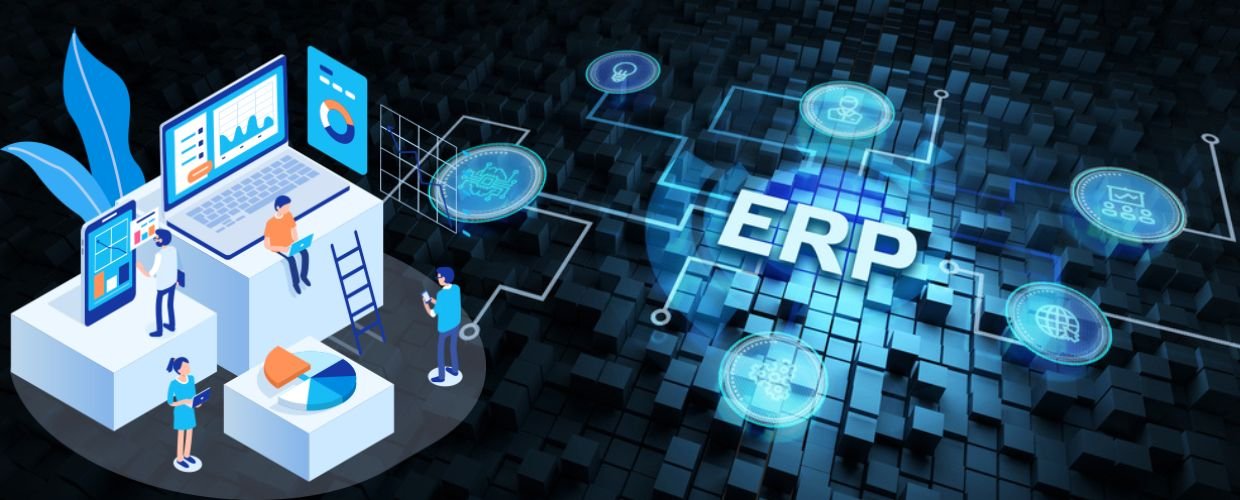An on-premise Enterprise Resource Planning (ERP) system is an enterprise management software solution deployed and operated within an organization’s infrastructure. This article discusses the importance of on-premise ERP, its application, benefits, limitations, and market value.
What is an On-premise ERP system?
An on-premise ERP is an ERP software solution installed and hosted locally within an organization’s infrastructure. In this deployment model, the ERP software is installed on the organization’s physical servers or computers and managed by its IT department or dedicated personnel.
In an on-premise ERP system, all the data and processes associated with the ERP system are stored and managed within the organization’s network. It means the organization controls the software, hardware, and infrastructure required to run the ERP system. The organization is responsible for the ERP software’s installation, maintenance, upgrades, and security.
Why is an On-premise ERP system important?
It remains significant for organizations seeking comprehensive control and customization over their enterprise management software. Some of the important are given below:
Data Control and Security
It provides organizations with complete control over their data. As the data is stored and managed within the organization’s infrastructure, it reduces concerns about data security and privacy. Organizations can implement security measures, access controls, and data backup strategies to ensure the confidentiality and integrity of their business-critical information.
Regulatory Compliance
Certain industries, for example, healthcare, finance, and government, have stringent compliance requirements. It provides organizations with the necessary control to adhere to regulatory standards and industry-specific regulations. Organizations can implement security protocols and data handling practices to comply with regulations, ensuring they meet legal obligations and maintain the trust of stakeholders.
Integration and Legacy Systems
On-premise ERP systems are beneficial for organizations that have existing legacy systems and infrastructure in place. These systems may have complex integration requirements, and an on-premise deployment allows for greater flexibility in integrating with legacy systems. Organizations can integrate the ERP system with their existing software, databases, and applications, enabling seamless data exchange and synchronization.
Performance and Scalability
It offers organizations direct control over their infrastructure, enabling them to optimize performance according to their specific needs. Organizations can allocate resources like servers, storage, and network bandwidth to meet performance requirements. Additionally, It provides scalability, allowing organizations to expand their system as their companies grow without relying on external service providers or subscription-based models.
Applications of On-premise ERP system
On-premise ERP systems offer organizations various applications and benefits, making them popular for businesses prioritizing control, customization, and data security. Some of the applications are given below:
Customized Business Processes
On-premise ERP systems allow organizations to tailor their business processes and workflows to meet their specific requirements. The software can be customized to reflect the organization’s unique operations, industry-specific needs, and internal policies. This flexibility enables organizations to streamline processes, improve operational efficiency, and optimize resource utilization.
Data Integration and Centralization
It enables data integration from various organizational departments and functions. Organizations gain a comprehensive view of their operations by centralizing data from finance, human resources, sales, and inventory. This integrated data promotes data-driven decision-making, enhances cross-departmental collaboration, and facilitates accurate reporting and analytics.
Industry-Specific Functionality
Many on-premise ERP systems offer industry-specific functionality and modules tailored to manufacturing, healthcare, retail, or construction sectors. These industry-specific features address each sector’s unique requirements and challenges, providing organizations with specialized tools to manage processes, regulations, and compliance standards specific to their industry.
Enhanced Security and Data Control
It offers organizations greater control over their data security. As the software and data reside within the organization’s infrastructure, it reduces reliance on external providers and mitigates the risks associated with cloud-based systems. Organizations can implement robust security measures, access controls, and data backup strategies tailored to their specific security requirements, ensuring data confidentiality, integrity, and compliance.
Benefits of On-premise ERP system
On-premise ERP systems offer several benefits for organizations prioritizing control, customization, and data security. Some of the benefits are given below:
Customization and Flexibility
It offers greater flexibility for customization and tailoring to align with specific business processes. Organizations can modify the software and workflows to meet their unique requirements. This level of customization allows for a closer fit between the ERP system and the organization’s operations, optimizing efficiency and supporting industry-specific needs.
Reduced Dependence on Internet Connectivity
Unlike cloud-based ERP systems that rely on internet connectivity for access and functionality, It operates within the organization’s infrastructure. It reduces the organization’s dependence on stable and high-speed internet connectivity, making the system accessible even in remote locations or areas with limited internet access.
Full Control over Upgrades and Maintenance
Organizations have complete control over system upgrades, patches, and maintenance timing and implementation with an on-premise ERP system. They can evaluate the impact of updates on their unique business processes and perform thorough testing before deploying them. This control allows organizations to minimize disruptions, ensure system stability, and address compatibility issues with other software or legacy systems.
Long-Term Cost Benefits
While the upfront costs of implementing an on-premise ERP system may be higher than cloud-based alternatives, on-premise systems can offer long-term cost benefits. Once the infrastructure and software are in place, organizations can avoid ongoing subscription fees associated with cloud-based ERP systems. This cost model can be advantageous for organizations with a long-term perspective,
Limitations of On-premise ERP system
While on-premise ERP systems offer several benefits, one must be aware of their limitations. Some of the limitations are given below:
Upfront Investment and Total Cost of Ownership
Implementing an on-premise ERP system requires a significant upfront investment. Organizations must purchase the necessary hardware, software licenses, and infrastructure and allocate resources for installation, configuration, and ongoing maintenance. It can result in higher initial costs compared to cloud-based ERP systems.
Resource Dependency
It requires dedicated resources within the organization to manage and maintain the system. These resources must have the technical expertise to handle installation, configuration, upgrades, and troubleshooting. Organizations must have a skilled team or engage external consultants to support the system effectively.
Scalability and Flexibility
On-premise ERP systems may pose challenges in terms of scalability and flexibility. As institutions grow or experience changes in their business needs, they may require additional hardware, server capacity, or software licenses to accommodate the increased workload. Scaling It can be complex and time-consuming, as it involves procuring and configuring new infrastructure.
Integration Complexity
It often requires integration with other internal systems and third-party applications to exchange data seamlessly. Integrating on-premise ERP systems with legacy systems or external software may present challenges due to differences in data formats, protocols, or APIs (Application Programming Interfaces).
How are growing global On-premise ERP system markets?
Grand View Research said the global On-premise ERP system market value was USD 59.48 billion in 2023. It is expected to reach USD 123.41 billion by 2030, with the market growing at a compound annual growth rate (CAGR) of 11.0 % from 2023 to 2030.
Key Companies
Some prominent global On-premise ERP system market players include Epicor Software Corporation, Hewlett-Packard Development Company, L.P.L.P., Infor Inc., International Business Machines Corporation, Microsoft Corporation, NetSuite Inc., Oracle Corporation, Sage Group, plc, SAP SE and Unit4.
Conclusions
On-premise ERP systems have advantages and limitations that organizations must consider when evaluating their enterprise management software options. On the positive side, It provides organizations with enhanced data security and control, allowing them to protect sensitive information and comply with industry-specific regulations. They offer flexibility and customization, enabling organizations to tailor the software to their unique business processes and requirements.
The choice between on-premise and cloud-based ERP systems depends on each organization’s needs, priorities, and capabilities. By carefully considering the advantages and limitations of on-premise ERP systems, organizations can make an informed decision that aligns with their strategic objectives and ensures the effective management of their enterprise resources.



